Block-printed Fabric
Block-Printed Fabric - Introduction
Block-printed fabric from Pakistan represents a profound intersection of history, culture, and craftsmanship. While the iconic Ajrak of Sindh is often highlighted, block printing traditions span multiple regions across the country, each offering its own unique aesthetics and stories. These textiles have adorned generations and continue to evolve, bridging rural heritage with contemporary design.
As global consumers seek authenticity, sustainability, and handmade quality, block-printed fabrics from Pakistan are being rediscovered and appreciated beyond borders. This article delves into the regional styles, processes, and modern relevance of this timeless craft.
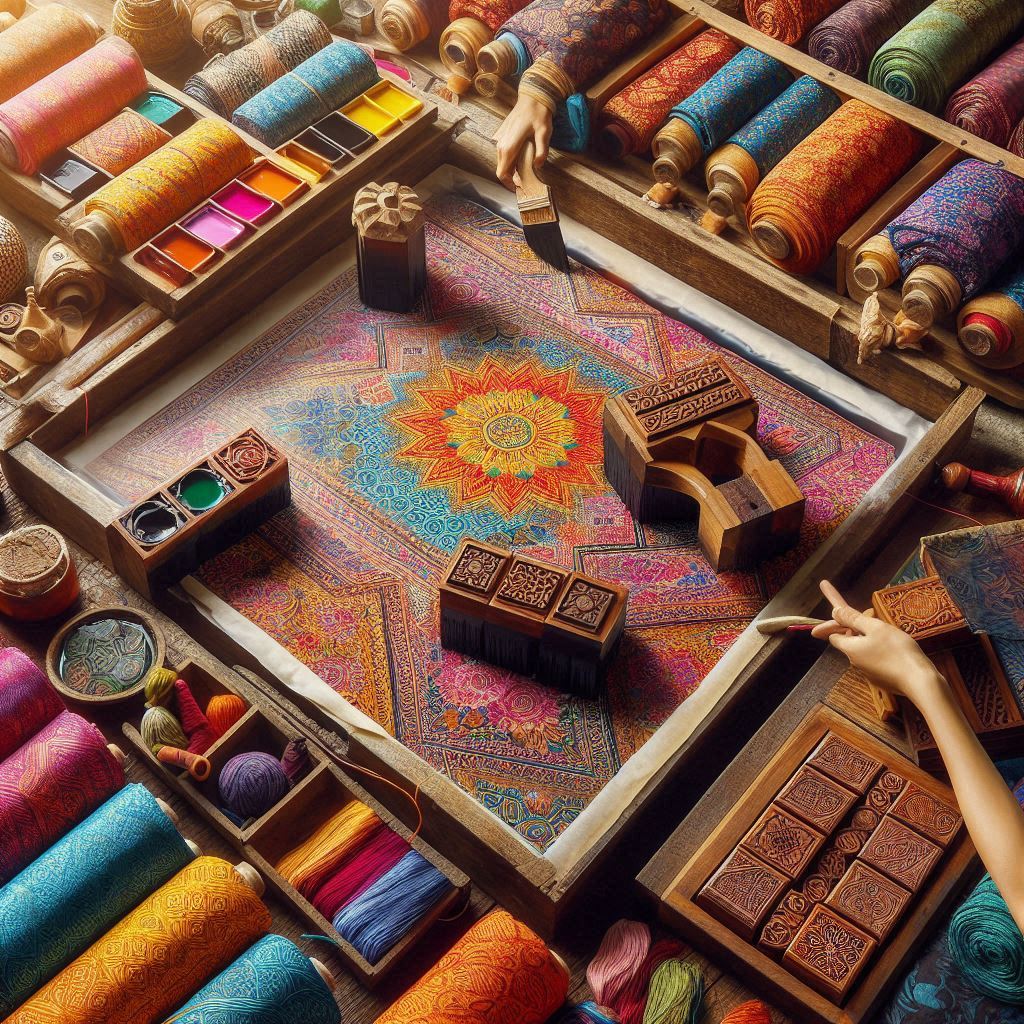 Fabric Block Printing
Fabric Block PrintingBlock-Printed Fabric - Understanding Block Printing: An Ancient Art
Block printing is a manual technique in which intricately carved wooden blocks are used to stamp patterns onto fabric. Each block represents a specific element of the design—whether a motif, outline, or color fill. The artisan aligns and presses each block by hand, repeating the process for each layer of the pattern.
The charm of block printing lies in its imperfections—slight variations in
color and alignment are part of what makes each piece unique. Traditional block
printing uses natural dyes such as indigo, madder, turmeric, and henna, applied
to cotton, khaddar, or silk.
This process not only produces visually rich textiles but also reflects a slow,
thoughtful approach to fashion—making it increasingly relevant in the age of
mass production.
Block-Printed Fabric - Modern Revival
Pakistan’s block-printed textiles are experiencing a renaissance in both domestic and international fashion scenes. Many known and well-established designers have incorporated block printing into modern silhouettes—from tunics to maxi dresses and from boho-style fusion outfits to ethnic casual wear on cotton and on silk fabrics.
The global shift toward sustainable fashion has also played a key role.
Block-printed fabrics align with slow fashion values: low energy use,
biodegradable dyes, fair labor, and cultural storytelling.
Artisan-led startups are now using Instagram and e-commerce platforms to sell
directly to consumers, bypassing middlemen and ensuring fair pay.
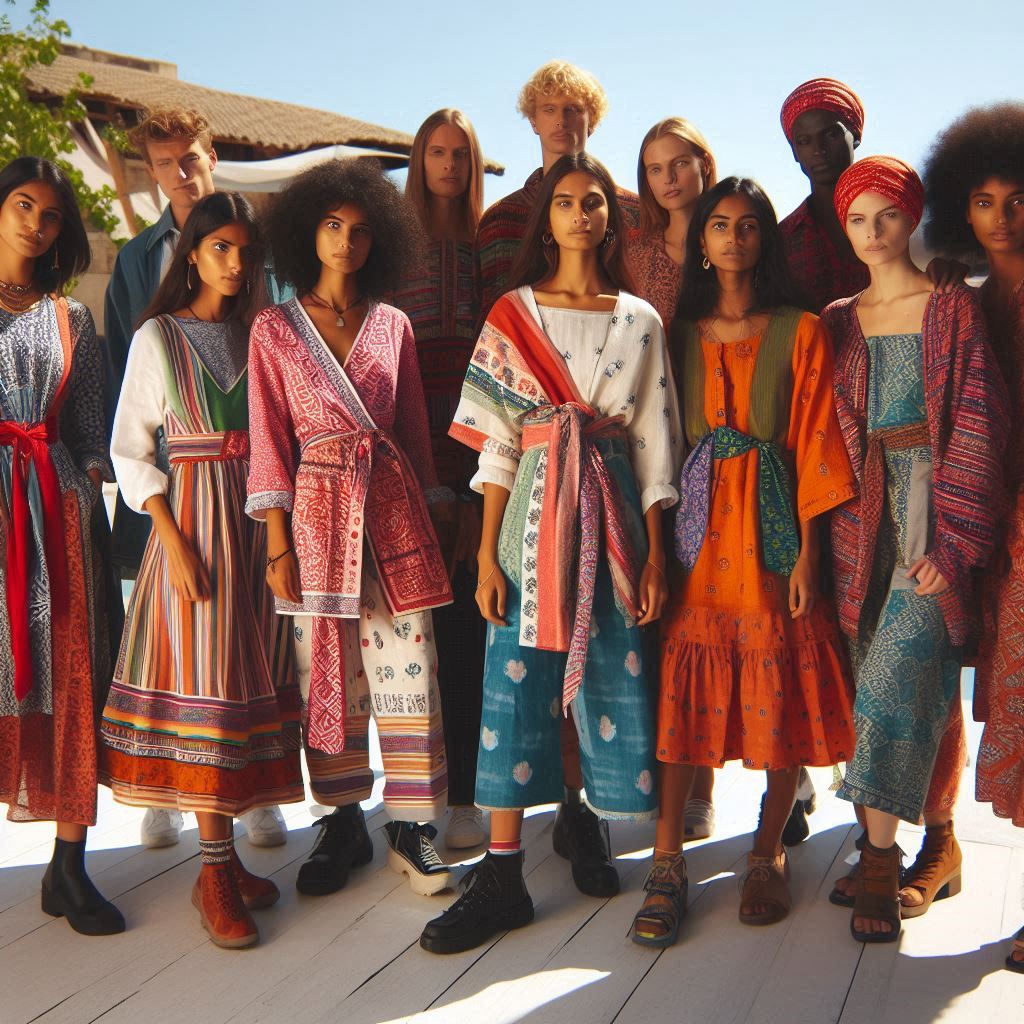 Block Printed Fusion Outfits
Block Printed Fusion Outfits Block Printed Fusion Outfits
Block Printed Fusion Outfits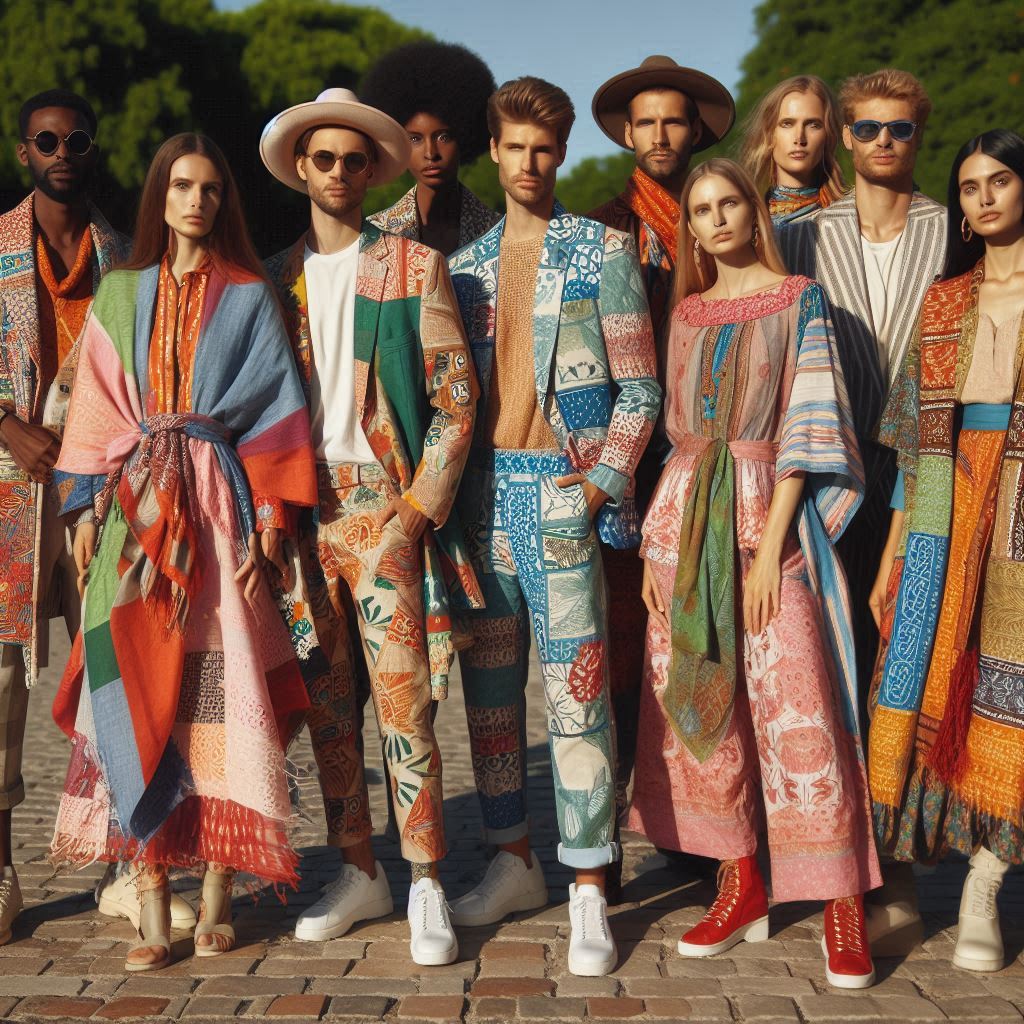 Block Printed Fusion Outfits
Block Printed Fusion OutfitsBlock-Printed Fabric - Common Uses
These textiles are both functional and fashionable. They are used in:
- Traditional garments: kurtas, dupattas, shalwar kameez
- Accessories: tote bags, scarves, shawls
- Home décor: curtains, cushion covers, table runners
- Boutique fashion: skirts, jackets, fusion wear
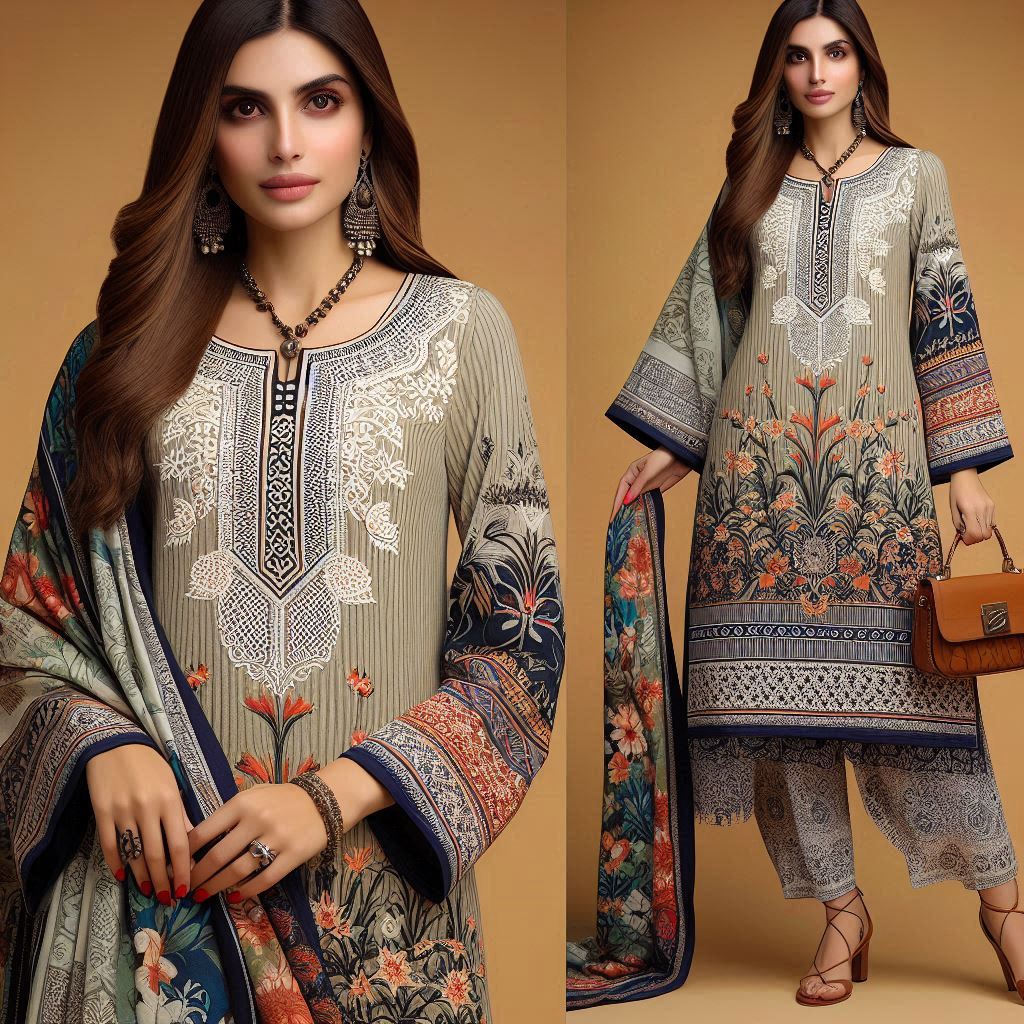 Block Printed Ethnic Outfits
Block Printed Ethnic Outfits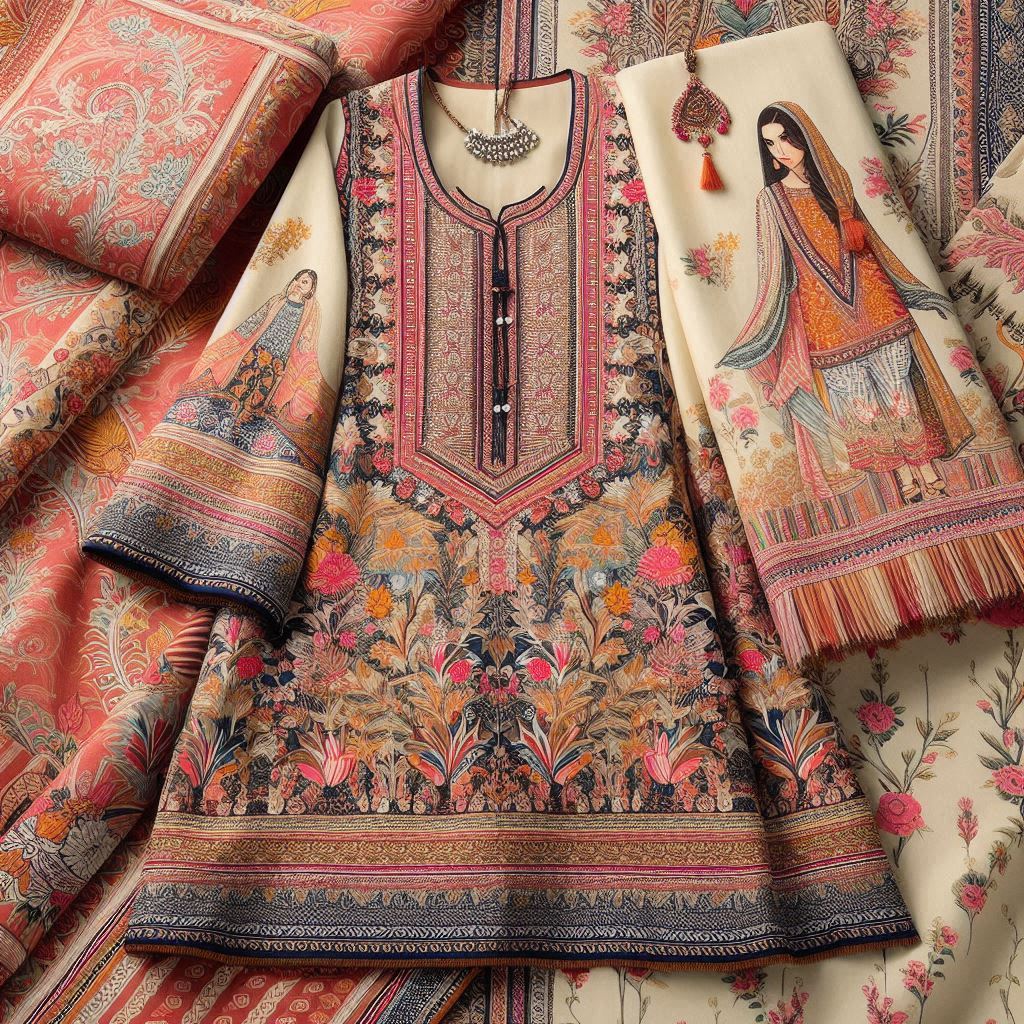 Block Printed Ethnic Outfit
Block Printed Ethnic Outfit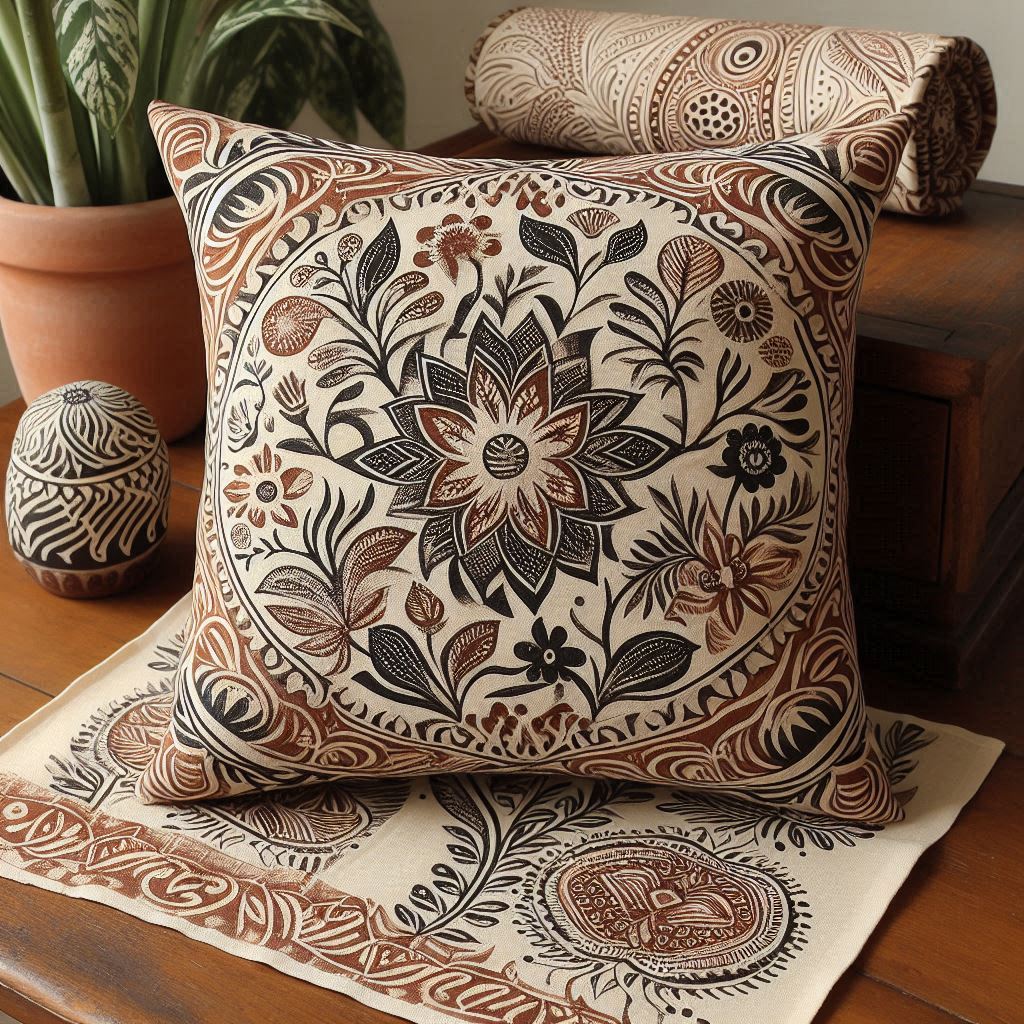 Block Print Cushion Cover
Block Print Cushion CoverBlock-Printed Fabric - Regional Block-Printing Styles
Punjab
Punjab is known for its flamboyant use of color and bold patterns, particularly florals and abstract geometries. Block printing in Punjab is often combined with hand embroidery, especially Phulkari, creating richly layered textiles.
Multan, Lahore, and Bahawalpur are significant hubs. In Multan, block-printed cotton and khaddar are used for both fashion and home décor. Designs are often inspired by Mughal architecture, local flora, and folk symbols. Summer collections often feature printed lawn fabric, while khaddar is more common in cooler months.
Artisan families in South Punjab have passed down printing skills for generations, and cooperatives are emerging to help women engage in textile production from home.
Sindh
While Ajrak remains the most iconic block-printing tradition from Sindh, the province is also home to other styles of block printing that are simpler and more commercially oriented. Towns such as Hala, Thatta, and Hyderabad produce lightweight printed fabrics using floral and geometric motifs, primarily on lawn and cotton. These designs are often more repetitive and subtle, catering to everyday wear and seasonal fashion collections.
The use of natural mordants and resist printing techniques is still preserved in some artisan circles, ensuring the continuation of traditional practices.
Explore Ajrak printing traditions here.
Balochistan
In Balochistan, block-printed textiles feature geometric and tribal motifs that reflect the region's nomadic heritage. Unlike Punjab and Sindh, where bright colors dominate, Balochistan’s prints often use earth tones like browns, blacks, and ochres.
Artisans work with coarser fabrics such as raw cotton or wool-cotton blends, suitable for the arid terrain. Printing often takes place in rural workshops and is typically done by men, while women specialize in embroidery.
There’s increasing interest in these prints among urban designers looking for minimalist and ethnic-inspired aesthetics. Small NGOs are helping connect these rural artisans to national and international markets.
Khyber Pakhtunkhwa (KPK)
Though not traditionally associated with block printing, KPK has seen recent growth in artisan collectives and revival projects. These involve blending traditional Pashtun embroidery with block-printed fabric bases.
Artisans in Peshawar and Swat are beginning to experiment with block printing
as part of broader textile training programs. Patterns often feature elements
from local architecture, Islamic motifs, and flora native to the mountainous
terrain.
The block printing scene here is young but promising, especially as demand
grows for regionally-rooted yet contemporary designs.
Block-Printed Fabric - The Process
How is Block-Printed Fabric Made
Creating block-printed fabric is a multi-step process requiring precision, patience, and artistry:
1. Design Creation – Motifs are sketched based on local influences or
contemporary themes.
2. Block Carving – Artisans carve hardwood blocks using fine chisels, creating
multiple blocks for each color layer.
3. Fabric Preparation – The fabric is washed, bleached if needed, and stretched
on long tables.
4. Dye Mixing – Dyes are prepared from natural sources or low-impact synthetic
pigments.
5. Stamping – Each block is dipped in dye and hand-stamped in alignment.
6. Drying and Washing – Fabrics are dried in sunlight, then washed and cured to
fix colors permanently.
Block-Printed Fabric - Why Choose Block-Printed Fabrics from Pakistan?
- Authenticity: Every piece is handmade and unique
- Sustainability: Low-waste, biodegradable, and ethical
- Cultural significance: Each motif and method reflects history
- Versatility: Ideal for both modern and traditional styling
- Empowerment: Supports rural communities and women artisans
Block-Printed Fabric - Final Thoughts
Block-printed fabrics from Pakistan are more than just textiles—they are cultural artifacts carrying centuries of skill, symbolism, and regional identity. As fashion increasingly values craft and conscience, these fabrics stand out for their beauty, authenticity, and sustainability.
By choosing block-printed fabrics, you’re not just making a style statement—you’re preserving a tradition, encouraging designers and artisans, and contributing to a more ethical fashion future.
- Home
- Products and Trades
- Block Printed Fabric


